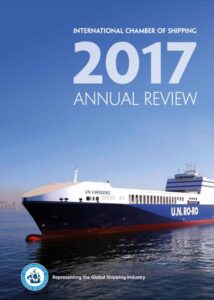ICS issued a report, highlighting the key issues that the maritime sector faced in the past year, in which ICS is engaged with regulators and other intergovernmental bodies that impact upon the global industry.
A large amount of effort within ICS and the global sector has been focused on persuading the IMO to develop some suitably ambitious CO2 reduction objectives, on behalf of the sector as a whole, in response to the Paris Agreement on climate change, with the long term objective of a fossil fuel free maritime industry. This transition could take several decades, and probably presents a far greater challenge for shipping than for most land based sectors, according to ICS Chairman Esben Poulsson.
A 2017 highlight was the entering into force of the BWM Convention, in September 2017, thirteen years after its original adoption by IMO Member States. The treaty has already proved to be one of the most complex and controversial pieces of technical regulation ever agreed by IMO. “However, there may now be light in sight at the end of a very long tunnel”, Mr. Poulsson claims.
Sticking with environmental regulation, another very important development in the past 12 months was the decision of IMO Member States to implement the global sulphur cap in 2020.
“The economic and operational implications of both will be profound indeed. I am confident that these major changes will eventually achieve their intended objectives, but only provided that governments are willing to think carefully about implementation and the transition to the new requirements,” ICS Chairman said.
“While so far nothing has fundamentally changed, we need to be vigilant against any rise in protectionism which would be deeply damaging to the continuing improvement of global prosperity as well as to the prospects of recovery in shipping; the current downturn in most shipping trades having now lasted so long that the end must surely soon be in sight, as evidenced by recent signs of improved prospects for both the container and dry bulk segments,” he added.
Explore more by reading the full report:

































































